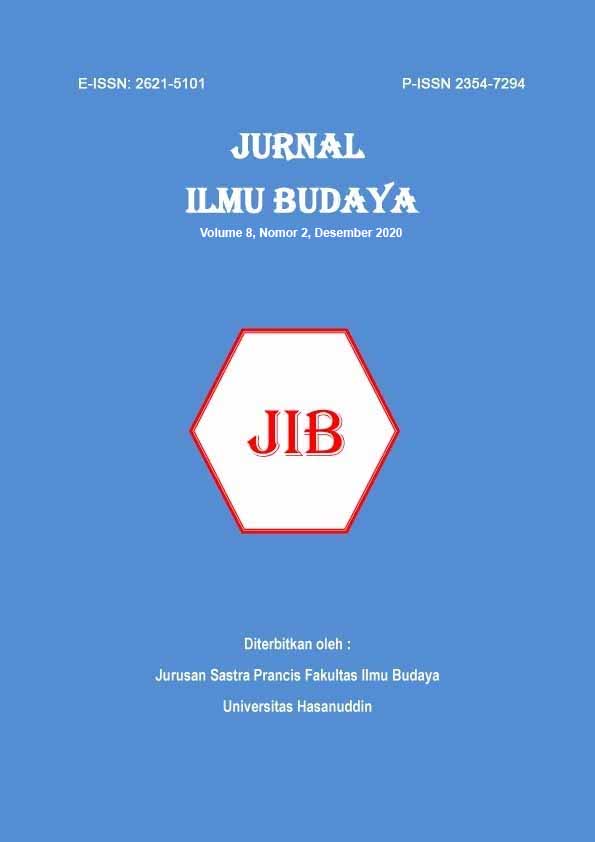KETIDAKSANTUNAN BERBAHASA PADA ISLAMOPHOBIA DI MEDIA SOSIAL
DOI:
https://doi.org/10.34050/jib.v8i2.11029Keywords:
Politeness, language, pragmatic, social media, islamophobiaAbstract
The writer of this article intended to analyze the image of the disrespectful utterance of Islamophobia in social media. The method of qualitative research and an inductive approach was used for the whole research process. The textual data of term of Islamophobia by the social media users and the discourse analysis method were used in this article. The decision of this article was the phenomenon of the disrespectful utterance of Islamophobia in social media could be identified into two aspects according to its’ source. The first aspect was the term of Islamophobia were constructed by the external side, by the non-muslims, by the Westerns, which Islam pictured stereotypically by this group. The second aspect was the term of Islamophobia manifested from the internally Muslims, which various expressions from the radical Islam group in social media supported the beginning of Islamophobia perception.
References
Arafah, B., Hasyim, M. (2019). The Language of Emoji in Social Media. KnE Social Sciences, 494-504.
Arafah, B., Hasyim, M. 2019. Linguistic functions of emoji in social media communication. Opción, Vol. 35, No. 24, 558-574.
Adlina, A. U. (2018). Agama dala Dimensi Politim dan Spiritualitas; Analisis terhadap Akun @Persatuan_pribumi. Masyarakat, Religi dan Tradisi Volume 04 No. 01 Juni .
Amin Mudzakkir, I. I. (2018). Menghalau Ekstremisme; Konsep dan Strategi Mengatasi Ekstremisme Kekerasan di Indonesia. Jakarta: Wahid Foundation dan Australia Indonesia Partnership for Justice 2 (AIPJ2).
Eriyanto. (2008). Analisis Wacana; Pengantar Analisis Teks Media. Yogyakarta: LKiS.
George, C. (2017). Pelintiran Kebencian; Rekayasa Ketersinggungan Agama. Jakarta: Pusat Studi Agama dan Demokrasi (PUSAD) Yayasan Paramadina.
Harianto, P. (2018). Radikalisme Islam dalam Media Sosial (Konteks; Channel Youtube). Jurnal Sosiologi Agama, Vol. 12, No. 2, Juli-Desember .
Hasyim, Muhammad. 2017. The Metaphor of Consumerism. Journal of Language Teaching and Research, Vol. 8, No. 3, pp. 523-530
Hasyim, M., Prasuri Kuswarini, P., Kaharuddin. 2020. Semiotic Model for Equivalence and Non-Equivalence in Translation. Humanities & Social Sciences Reviews. 8 (3), 381-391.
Saputra, W.I., Muhammad Hasyim, Muhammad., Junus, Fierenziana G. 2020. Perspektif Media Prancis dalam Pemberitaan Pencemaran Air di Indonesia. Al-Munzir, Vol. 13. No. 1, 19-34.
Kaharuddin., & Hasyim, M. (2020). The Speech Act of Complaint: Socio-Cultural Competence Used by Native Speakers of English and Indonesian. International Journal of Psychosocial Rehabilitation, 24(6), 14016-14028.
Intan, Tania. 2018. Narator Sebagai Penyampai Kritik Sosial Dalam Novel Moha Le Fou Moha Le Sage Karya Tahar Ben Jelloun. Jurnal Ilmu Budaya. 6 (2), 207-220
Jauharoti Alfin, A. M. (2018). Wacana Islamophobia dan Persepsi terhadap Islam Indonesia melalui Studi Bahasa di Kalangan Mahasiswa Polandia. Miqot, Vol. XLII No. 1 Januari-Juni .
Kuswarini, Prasuri, Muhammad Hasyim, M., Chotimah, Irma N.H. 2020. Othering The Self as A Form of Mimicry in The English Translation of Hirata’s Laskar Pelangi. Journa Of Critical Reviews. Vol 7, Issue 19, 1286-1295
Maknun, T., Hasjim, M., Muslimat, M. and Hasyim, M. 2019. The form of the traditional bamboo house in the Makassar culture: A cultural semiotic study. Semiotica. In press. https://doi.org/10.1515/sem-2017-0162
Rakhmat, J. (2009). Psikologi Komunikasi. Bandung: Remaja Rosdakarya.
Rustandi, R. N. (2016). Meme dan Islam; Simulakra Bahasa Agama di Media Sosial. Academic Journal for Homiletic Studies, Volume 10 Nomor 1 .
Trust, R. (1997). Islamophobia: A Challenge For Us All. London: Runnymede Trust, Commission on British Muslims and Islamopbobia.
Ulya. (2018). Post Truth, Hoax dan Religiusitas di Media Sosial. Fikrah; Jurnal Ilmu Aqidah dan Studi Keagamaan, Vol.6, No. 2 .
Wajahat Ali, E. C. (2011). The Roots of The Islamophobia Network in America. Washington DC: Center for American Progress.
Wijaya, S. H. (2010). Media dan Terorisme; Stereotype Pemberitaan Media Barat dalam Propaganda Anti-Terorisme oleh Pemerintah Amerika Serikat. The Messengger, Volume II, Nomor 1, Edisi Januari .
Yuliarti, H. C. (2017). ISIS dan Stigma Islamophobia; Framing tentang Konstruksi Pemberitaan ISIS di Media Online . Komunikasi Kareba, Vol.6 No.2 Juli – Desember .
https://www.arrahmah.com/2015/01/04/islamophobia-berkembang-di-media-sosial/
https://www.pikiran-rakyat.com/nasional/pr-01320443/media-sosial-mengubah-wajah-islam-di-indonesia
https://dunia.tempo.co/read/632683/facebook-dituding-sebarkan-islamophobia
Downloads
Published
Issue
Section
License
Copyright (c) 2020 JURNAL ILMU BUDAYA

This work is licensed under a Creative Commons Attribution-NonCommercial 4.0 International License.


